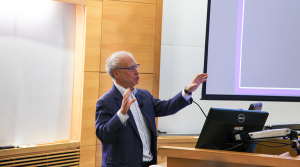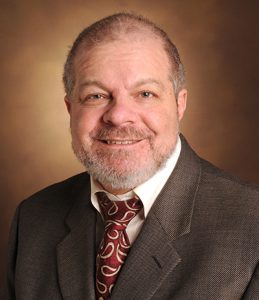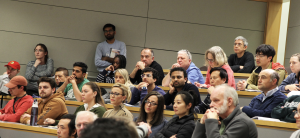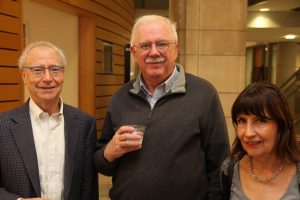
Circadian clocks in the liver play fundamental roles in maintaining liver homeostasis—a state of balance among body systems necessary to survive and function. Disruption of circadian clocks in the liver can exacerbate liver diseases, such as cholestasis, hepatitis, fatty liver, cirrhosis, and liver cancer.
Endocrinologist and physician-scientist Mitch Lazar delivered an Apex Lecture to a full room of School of Medicine Basic Sciences researchers on Feb. 11, 2025. Lazar is the Willard and Rhoda Ware Professor of Diabetes and Metabolic Diseases and director of the Institute for Diabetes, Obesity, and Metabolism at the University of Pennsylvania Perelman School of Medicine. Known for his discovery of the hormone resistin and his contributions to the transcriptional regulation of circadian rhythms and metabolism, Lazar based his lecture on the question “Does your liver know what time it is?”

He began the lecture with a personal tribute to his late friend and colleague David Wasserman, who was a professor in the SOMBS’s Department of Molecular Physiology and Biophysics. The main theme of Lazar’s talk centered around the nuclear receptor superfamily transcription factors, particularly the REV-ERB proteins, and their role in regulating circadian rhythms and metabolism.
Lazar provided an overview of circadian rhythms, explaining that they are controlled not only by the central clock in the suprachiasmatic nucleus, known as the SCN, of the hypothalamus, but also by peripheral clocks in individual cells throughout the body. This desynchronization of internal clocks is thought to contribute to various metabolic disorders in people who work night shifts. He then focused on REV-ERB nuclear receptors, which function as transcriptional repressors within the core clock machinery. By recruiting co-repressor complexes, REV-ERBs rhythmically regulate the expression of clock genes like Bmal1, which is a key positive regulator of the circadian clock.
Using genetic mouse models, he showed that disrupting REV-ERB expression in the liver leads to dysregulation of the hepatic circadian clock and an exacerbation of diet-induced fatty liver disease, highlighting the importance of REV-ERBs in coordinating rhythmic metabolic processes in the liver.
Lazar presented data on the role of REV-ERBs in the central circadian pacemaker of the SCN. Selective knockout of REV-ERBs in the SCN leads to a shortening of the circadian period that regulates free running and locomotor activity in mice kept in constant darkness, demonstrating that REV-ERBs are required for normal clock function in this brain region as well.

He noted that this shorter circadian period in the REV-ERB knockout mice provided an opportunity to test the hypothesis that metabolic dysfunction associated with (night) shift work is due to a mismatch between the internal circadian clock and the external light-dark cycle. Indeed, when the light-dark cycle was adjusted to match the shorter intrinsic period of the REV-ERB knockout mice, the metabolic abnormalities like weight gain and hyperglycemia were ameliorated, supporting this idea.
Lazar then discussed the regulation of circadian rhythms in the liver. He noted that the timing of food intake appears to be the “key zeitgeber” or time cue for peripheral clocks such as the liver’s clock. Experiments in the Lazar lab confirmed that restricting food intake to the light phase, when mice would normally be resting, can shift the rhythmic expression of clock genes like Bmal1 in the liver.
Lazar’s talk highlighted the critical importance of REV-ERB nuclear receptors in coordinating circadian rhythms and metabolic processes at both the cellular and organismal levels, providing insight into how disruption of these pathways can contribute to metabolic dysfunction.

A spirited Q&A session with attendees capped the lecture and was immediately followed by a reception in the first-floor atrium of MRB III.
For more information about School of Medicine Basic Sciences Apex Lectures, please visit the SOMBS Events page.